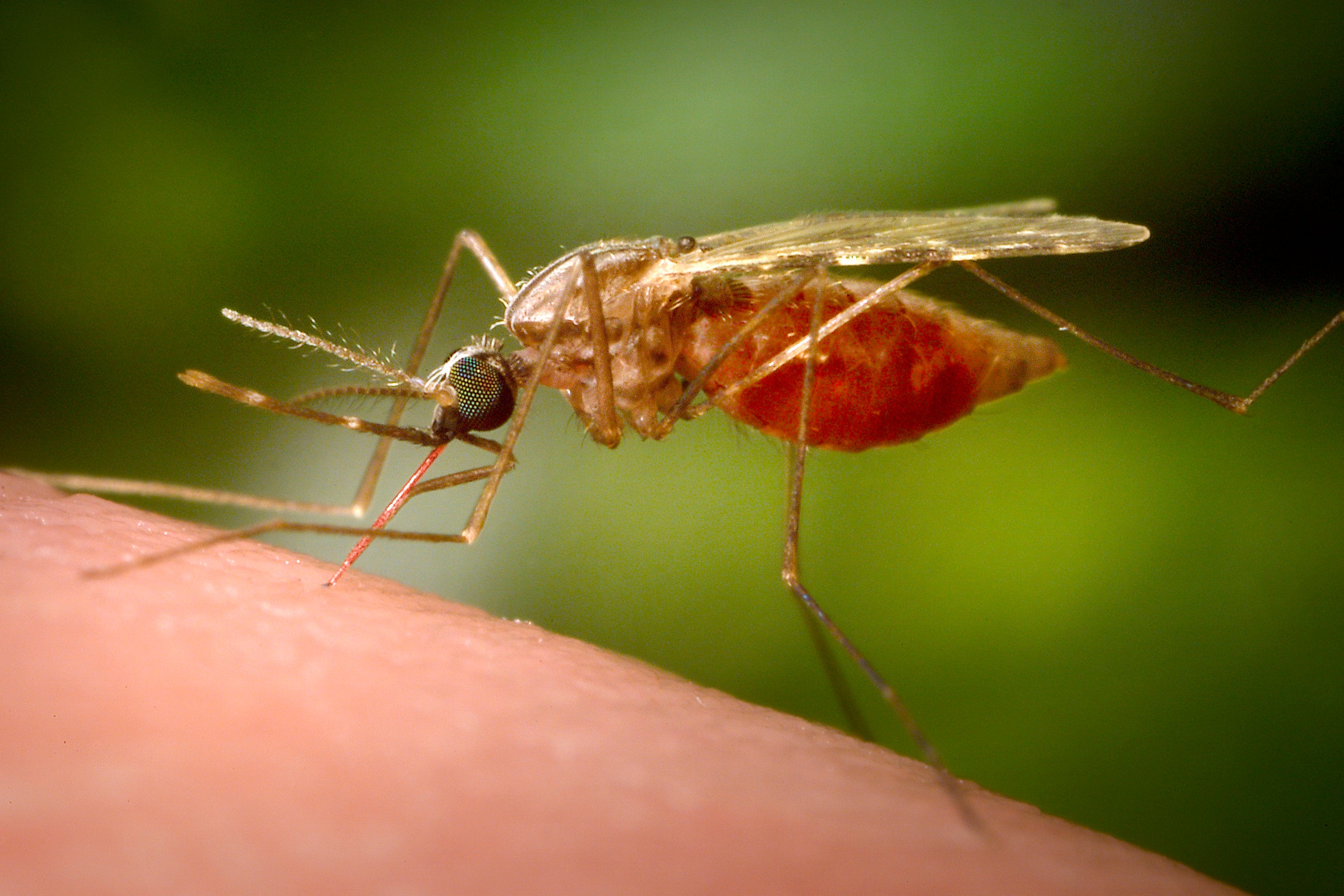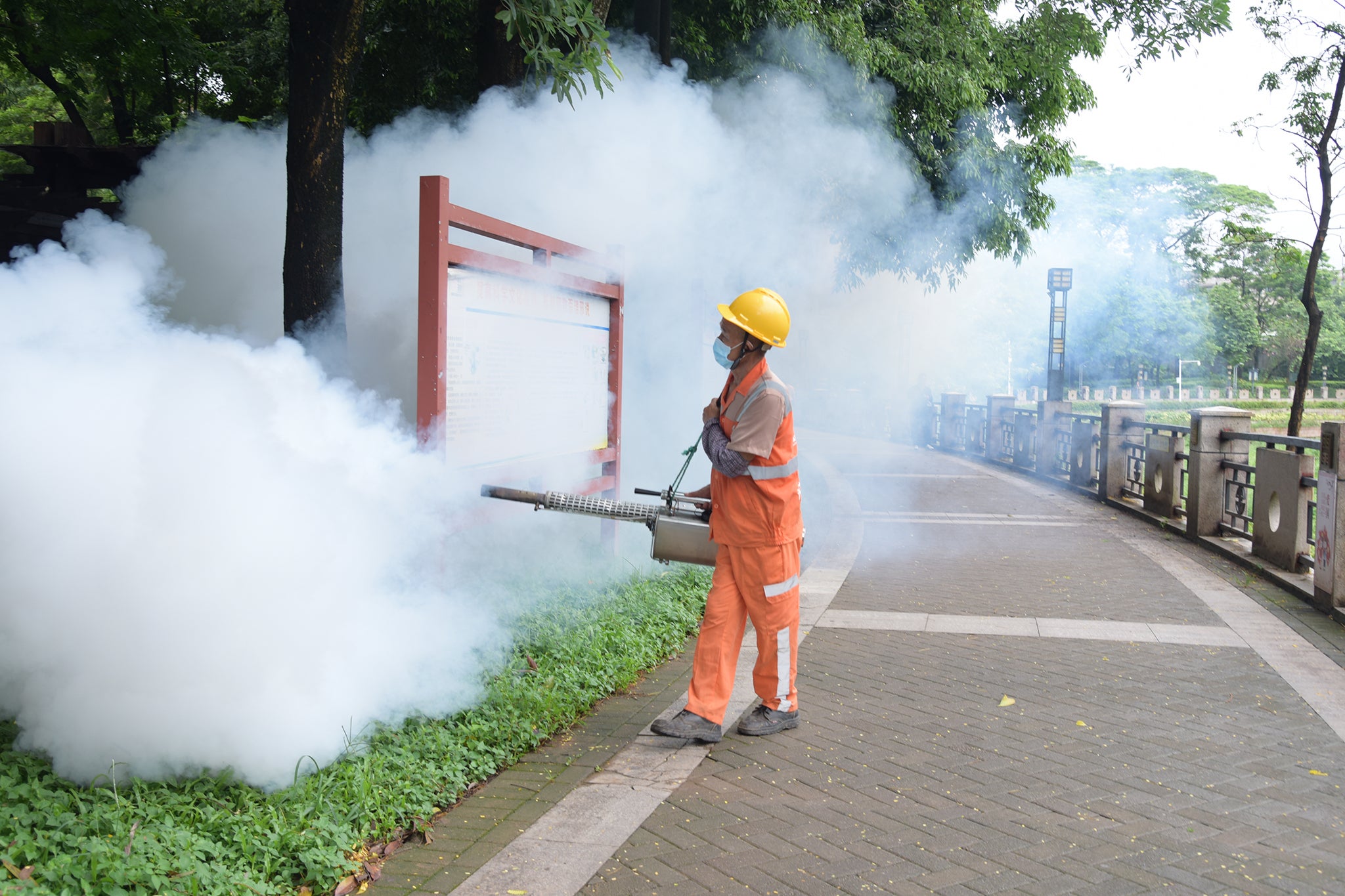How China is fighting a war against chikungunya

Authorities in China are fighting to prevent the spread of a mosquito-borne viral disease after thousands of cases were reported in a few weeks.
The country has seen nearly 8,000 cases of chikungunya in less than a month, mostly in the city of Foshan in Guangdong province, prompting authorities to impose measures akin to the “zero Covid” policy that saw the Chinese government impose some of the strictest regulations in the world during the coronavirus pandemic.
They have also deployed drones to identify mosquito breeding sites, and have reportedly introduced “elephant mosquitoes” whose larvae prey on the virus-carrying species.
Chikungunya patients are required to stay in “quarantine zones” or hospitals, where their beds are protected with nets to prevent the spread of the disease. They are discharged only after testing negative for the virus.

Soldiers wearing masks have been spraying insecticides in parks and in the streets, while authorities have released more than 5,000 larva-eating fish into the lakes of Foshan.
The city’s residents have been ordered to discard any stagnant water, and community workers have been tasked with inspecting homes, local reports said. Households and businesses that don’t cooperate could risk being penalised up to 10,000 yuan or face criminal charges for “obstructing the prevention of infectious diseases”.
Foshan has mandated real-name registration for medication to treat chikungunya, while two other cities have told travellers returning from affected areas to monitor their health.
Two residents who did not want to be named told The New York Times that workers had entered their homes without consent to search for stagnant water. Others alleged that their plants were taken away or destroyed in front of them. About five houses had their electricity cut for not cooperating, according to a notice issued in the district of Guicheng.

Social media users criticised the pandemic-era measures, calling them unnecessary. “What’s the point of the quarantine? It’s not as though an infected patient will then go around biting other people,” a user wrote on Weibo.
In addition to Foshan, 12 cities in the southern Guangdong province have reported infections. In Hong Kong, a 12-year-old boy who travelled to Foshan in July has been diagnosed with chikungunya fever.
China’s vice-premier Liu Guozhong last week called for an all-out effort to prevent the spread of the disease within and outside the affected regions, Xinhua reported.
The rise in infections has prompted the US Centers for Disease Control and Prevention to issue a travel notice for China.
Chikungunya is spread mainly by the Aedes mosquito and has no specific treatment. It can rapidly cause large outbreaks. As the mosquitoes bite in the daytime, prevention through the use of insect repellent and long-sleeved clothing is crucial.
Chikungunya outbreaks have occurred in Africa, Asia, Europe, the Americas, and islands of the Indian and Pacific Oceans. There is a risk of the virus being spread to unaffected areas by infected travellers, according to CDC guidance.

The infection can cause fever and joint pain, with other symptoms including headache, muscle pain, joint swelling and rash. In serious cases, the virus can cause long-term disability. If an infected person does not experience joint pain, the symptoms will be mild and can go unrecognised.
Most people will recover fully from the infection. There have been occasional instances of eye, heart, and neurological complications, while newborns and older people with underlying medical conditions are at higher risk of severe disease.
Last month, the World Health Organisation (WHO) issued an urgent call for action to prevent a repeat of the 2004-05 epidemic of chikungunya as new outbreaks linked to the Indian Ocean region spread to Europe and other continents.
Diana Rojas Alvarez, a medical officer at the WHO, told reporters in Geneva that an estimated 5.6 billion people live in areas across 119 countries at risk from the virus.
Although the number of new locally transmitted cases of chikungunya fever has declined in Guangdong over the past week, the risk remains, according to Kang Min of the Guangdong Provincial Centre for Disease Control and Prevention.
“The recent surge has been initially contained, with a downward trend in newly reported cases across the province,” he was quoted as saying by the Global Times.
The next few weeks are especially daunting for disease prevention and control, provincial authorities say, as heavy rain and flooding boost mosquito activity.




